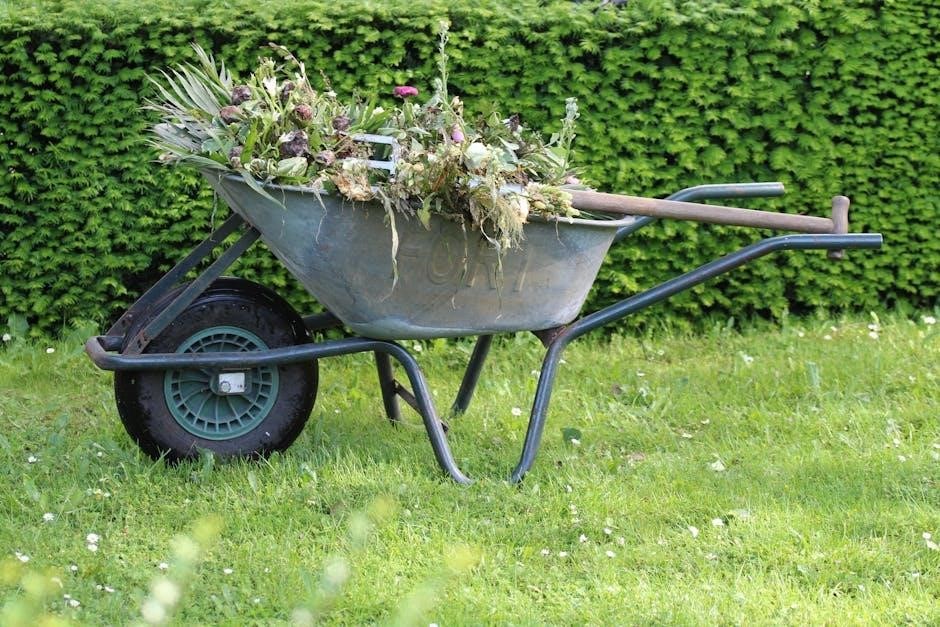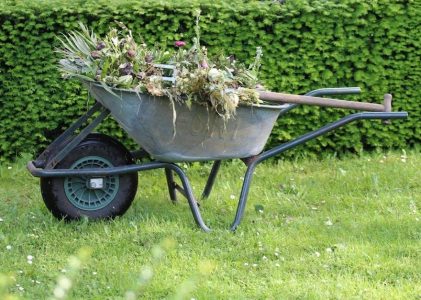Regular maintenance is essential for extending the life and efficiency of your lawn mower. A well-structured maintenance checklist ensures tasks are organized and performed consistently.
1.1 Importance of Regular Maintenance
Regular maintenance is crucial for optimizing your lawn mower’s performance and longevity. It reduces downtime, prevents costly repairs, and ensures safety. A consistent routine helps maintain cutting efficiency, extends equipment life, and supports overall lawn health. Neglecting maintenance can lead to poor cutting quality, increased wear, and potential hazards. By following a structured checklist, you can proactively address issues, ensuring your mower operates at peak performance and delivers reliable results throughout the season. Regular upkeep also safeguards your investment and enhances workplace safety.
1.2 Benefits of Using a Maintenance Checklist
A maintenance checklist provides a structured approach to lawn mower upkeep, ensuring no critical tasks are overlooked. It simplifies scheduling by organizing daily, weekly, and annual tasks, promoting consistency. Using a checklist enhances accountability, reduces downtime, and lowers repair costs. It also improves safety by reminding users to disconnect power and wear protective gear. Additionally, a checklist helps track progress, ensuring compliance with manufacturer guidelines and extending equipment lifespan. This tool is invaluable for both professionals and homeowners aiming to maintain optimal mower performance and efficiency. Regular use fosters a proactive maintenance culture, preventing overlooked tasks and ensuring seamless operation.

Pre-Maintenance Safety Checks
Ensure safety by disconnecting the power supply and wearing protective gear before starting maintenance. Always inspect the environment for potential hazards.
2.1 Disconnecting the Power Supply
Disconnecting the power supply is a critical first step in any maintenance routine. For gas-powered mowers, turn off the engine and allow it to cool. For electric mowers, unplug the power cord. If your mower has a battery, remove it entirely to ensure no accidental start-ups. This simple step prevents injuries and ensures your safety while working on the machine. Always double-check that the power is off before proceeding with any repairs or inspections.
2.2 Wearing Protective Gear
Wearing protective gear is essential for safety during lawn mower maintenance. Always wear safety glasses to protect your eyes from debris. Durable gloves provide grip and safeguard your hands from cuts. Sturdy footwear prevents injuries from sharp objects. Additionally, consider ear protection to reduce noise exposure from machinery. These precautions minimize risks of accidents and ensure a safe working environment. Neglecting protective gear can lead to serious injuries, making it crucial to prioritize safety first. Always stay prepared to handle maintenance tasks effectively.
2.3 Ensuring a Safe Working Environment
A safe working environment is crucial during lawn mower maintenance. Always clear the area of obstacles and ensure proper ventilation to avoid inhaling harmful fumes. Keep children and pets at a safe distance to prevent accidents. Check for any flammable materials nearby and secure the mower on level ground. If working underneath, use jack stands for added stability. Ensure the area is well-lit to spot potential hazards. Following these steps helps prevent hazards and ensures a secure workspace for effective maintenance.
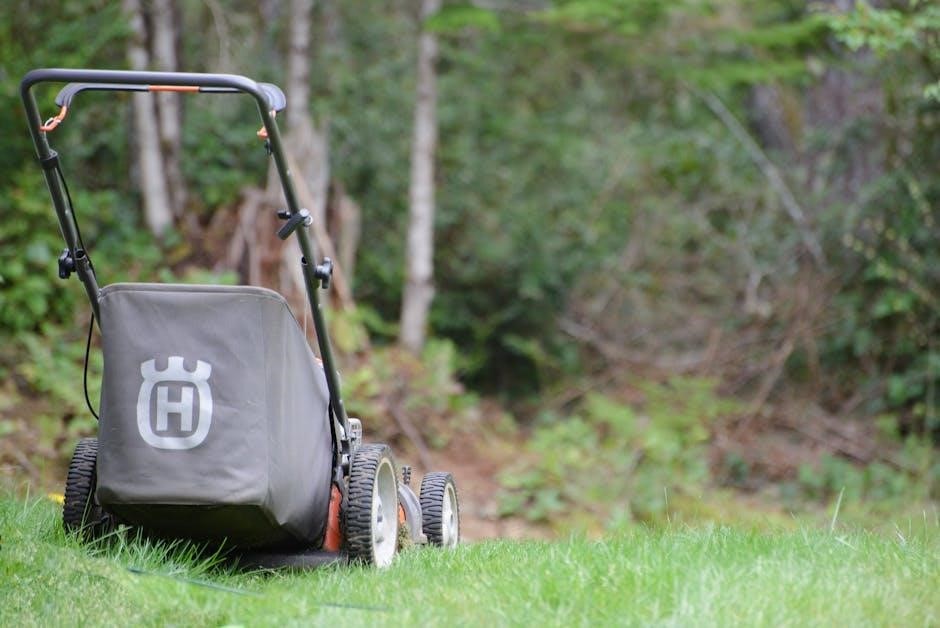
Daily Maintenance Tasks
Daily tasks ensure your lawn mower operates efficiently and safely. Inspect blades for damage, check oil levels, clean debris from the deck, and verify tire pressure.
3.1 Inspecting the Mower Blades
Inspecting mower blades daily ensures optimal cutting performance and reduces wear on the engine. Dull or damaged blades can tear grass, leaving it vulnerable to disease. Check for signs of dullness, nicks, or bending. Remove any debris stuck to the blades, as it can imbalance the mower. If blades are damaged, replace them promptly to maintain even cutting and prevent further issues. Sharp, clean blades promote healthy grass and efficient mowing. Regular inspections help extend the lifespan of your lawn mower.
3.2 Checking the Oil Level
Checking the oil level in your lawn mower ensures proper engine lubrication and prevents overheating. Locate the oil dipstick, usually labeled, and wipe it clean with a cloth. Reinsert it to get an accurate reading. The oil level should be between the minimum and maximum marks. Refer to your manual for the recommended oil type. If the level is low, add the specified oil to avoid engine damage. Regular checks help maintain engine health and ensure reliable performance during mowing sessions.
3.3 Cleaning the Mower Deck
Cleaning the mower deck is essential for maintaining cutting efficiency and preventing rust. After each use, remove grass clippings and debris using a wire brush or scraper. Regular cleaning ensures proper airflow and prevents clogging. For tougher buildup, mix baking soda and water to create a paste, apply it, and rinse with water. Avoid using high-pressure washes, as they can damage the deck. Cleaning the mower deck regularly extends its lifespan and keeps your mower performing optimally.
3.4 Ensuring Proper Tire Pressure
Proper tire pressure is crucial for efficient mowing and even cutting. Check the pressure weekly and before each use, ensuring it matches the manufacturer’s recommendations. Underinflated tires can lead to poor traction and uneven cutting, while overinflation may reduce stability. Use a pressure gauge for accuracy and adjust as needed. Regular checks help maintain optimal performance and extend the lifespan of your mower’s tires. Always refer to your mower’s manual for specific guidelines.
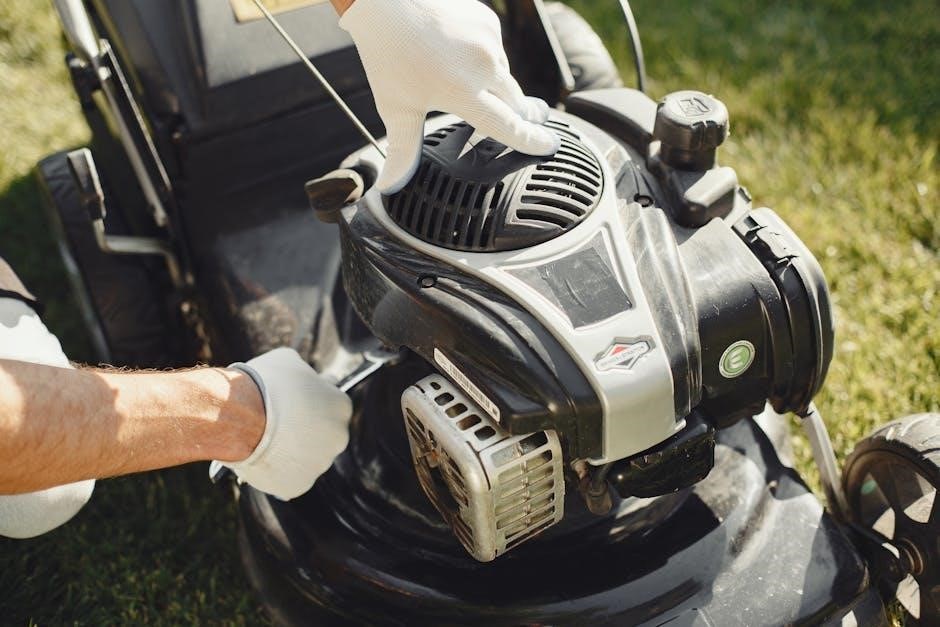
Weekly to Monthly Maintenance Tasks
Performing these tasks ensures optimal mower performance. Sharpen blades for clean cuts, service the air filter for better engine efficiency, and check the battery and lubricate moving parts regularly.
4.1 Sharpening the Mower Blades
Sharpening mower blades is crucial for maintaining a healthy lawn. Dull blades tear grass, leaving it vulnerable to disease. Check blades weekly for dullness or damage. Remove blades carefully, sharpen them using a grinder or file, and ensure they are balanced. A sharp blade improves cutting efficiency and reduces engine strain. Sharpening also enhances the mower’s overall performance and extends its lifespan. For best results, sharpen blades at least once a month or more frequently if used heavily. Always wear protective gear when handling sharp objects.
4.2 Servicing the Air Filter
Servicing the air filter is essential for optimal engine performance. A dirty air filter reduces efficiency and fuel economy. Locate the air filter, typically in the engine compartment, and gently remove it. Inspect for dirt or debris and clean it with compressed air or replace it if damaged. Refer to the manufacturer’s guidelines for specific instructions. A clean air filter ensures proper airflow, preventing engine overheating and maintaining peak performance. Regular servicing extends the mower’s lifespan and improves cutting quality. Replace the filter every 1-2 months or as recommended.
4.3 Checking and Cleaning the Battery
Regularly inspecting and cleaning the battery ensures reliable engine starting. Disconnect the battery terminals and inspect for corrosion or damage. Clean terminals with a wire brush and a baking soda solution. Reconnect securely after cleaning. Check the battery charge level and recharge if necessary. Ensure the battery is properly seated and terminals are tightened. Replace the battery if it shows signs of wear or fails to hold a charge. Proper maintenance prevents unexpected shutdowns and extends battery life.
4.4 Lubricating Moving Parts
Lubricating moving parts is essential to reduce friction and wear. Apply silicone-based lubricant to hinges, wheels, and cables. Ensure all pivot points are well-greased to maintain smooth operation. Refer to the manufacturer’s guidelines for recommended lubricants. Wipe off excess grease to prevent dirt buildup. Regular lubrication extends the lifespan of components and ensures the mower operates efficiently. Inspect and lubricate all moving parts at least monthly or as needed. This step is crucial for optimal performance and durability.

Annual Maintenance Tasks
Annual maintenance ensures longevity and optimal performance. Key tasks include oil changes, spark plug replacements, belt inspections, and brake checks. Regular attention prevents costly repairs.
5.1 Changing the Engine Oil
Changing the engine oil annually is crucial for maintaining your lawn mower’s performance. Always use the oil type recommended in the manufacturer’s manual. Warm up the engine, drain the old oil into a pan, and replace the oil filter. Refill with fresh oil, ensuring the level matches the dipstick’s indication. Properly dispose of used oil and filter. Regular oil changes prevent engine wear and ensure smooth operation. Keep track of oil changes in your maintenance checklist for future reference.
5.2 Replacing the Spark Plug
Replacing the spark plug annually ensures reliable engine ignition and optimal performance. Locate the spark plug near the cylinder, remove the boot, and use a spark plug wrench to unscrew the old plug. Install a new plug with the correct gap specified in your manual. Tighten securely and reconnect the boot. A properly gapped spark plug improves fuel efficiency and prevents engine misfires. Keep track of replacements in your maintenance checklist for consistency and performance monitoring.
5.3 Inspecting and Replacing the Belt
Inspect the mower’s drive belt annually for cracks, frays, or excessive wear. A damaged belt can cause poor performance or complete breakdown. To replace, disconnect the power, remove the old belt, and install a new one aligned with the pulleys. Ensure proper tension to avoid slippage. Regular belt checks prevent unexpected failures and maintain cutting efficiency. Document replacements in your checklist to keep track of maintenance and ensure the mower operates smoothly throughout the season.
5.4 Checking the Brake System
Inspect the brake system annually to ensure safe operation. Check for worn or damaged components, such as pads or cables, and ensure proper function. Clean and lubricate moving parts to prevent corrosion and friction. Replace any worn components promptly to maintain reliability. Document the inspection in your checklist to track maintenance and uphold safety standards. A well-maintained brake system prevents accidents and ensures consistent performance throughout the mowing season.

Seasonal Maintenance Tips
Seasonal maintenance ensures optimal performance. Prepare pre-season, check mid-season, and store properly end-of-season. Adjust strategies based on usage and weather conditions for longevity.
6.1 Pre-Season Preparation
Before the mowing season begins, ensure your lawn mower is ready. Check and sharpen blades, change engine oil, replace the air filter, and charge the battery. Inspect belts for wear and lubricate moving parts. Refer to your maintenance checklist PDF for specific steps. Addressing issues early prevents mid-season breakdowns and ensures optimal performance. Proper pre-season preparation extends the lifespan of your mower and guarantees a smooth start to the cutting season.
6.2 Mid-Season Checks
During the mowing season, regular checks ensure consistent performance. Sharpen mower blades every 20-25 hours of use to maintain clean cuts. Check oil levels before each use and top up as needed. Clean the mower deck after every few uses to prevent debris buildup. Inspect tires for proper pressure and ensure all bolts and cables are secure. Refer to your maintenance checklist PDF for detailed steps to keep your mower running smoothly throughout the season.
6.3 End-of-Season Storage
Proper end-of-season storage ensures your lawn mower remains in good condition. Drain fuel or use a fuel stabilizer to prevent stale gas. Change the engine oil and sharpen blades for next season. Clean the mower deck thoroughly to remove debris. Lubricate moving parts to protect against rust. Check tire pressure and store in a dry, protected area. Refer to your maintenance checklist PDF for detailed steps to prepare your mower for winter storage effectively.

Best Practices for Lawn Mower Maintenance
Adhere to the maintenance checklist PDF, perform regular checks, and store equipment properly. Keep records of maintenance activities and address issues promptly to ensure longevity and efficiency.
7.1 Following the Manufacturer’s Guidelines
Always refer to your lawn mower’s user manual for specific maintenance instructions. Manufacturer guidelines provide model-specific recommendations, ensuring safety and optimal performance. Adhere to suggested timelines for oil changes, blade sharpening, and filter replacements. Failure to follow these guidelines may void warranties or lead to premature wear. Tailor your maintenance checklist PDF to align with the manufacturer’s advice for your particular mower model. This ensures all critical components are addressed, enhancing efficiency and longevity of the equipment.
7.2 Keeping Records of Maintenance
Maintaining a detailed record of your lawn mower’s upkeep ensures consistency and helps track completed tasks. Use the maintenance checklist PDF to log dates, services performed, and parts replaced. This documentation is invaluable for monitoring wear and tear, preventing overlooked tasks, and planning future maintenance. Digital tools or spreadsheets can also be used for easy access and updates. Regularly reviewing these records helps identify patterns and ensures your mower remains in optimal condition year-round.
7.3 Using Genuine Replacement Parts
Using genuine replacement parts for your lawn mower ensures optimal performance and longevity. These parts are specifically designed to meet manufacturer standards, guaranteeing proper fitment and functionality. Genuine parts often come with warranties, providing added protection. They also ensure safety and reliability, reducing the risk of premature wear or failure. Always refer to your maintenance checklist PDF for recommended parts and suppliers to maintain your mower’s efficiency and extend its lifespan.
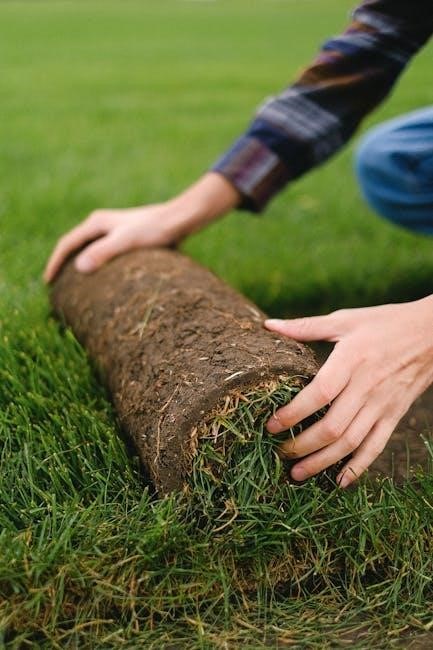
Common Overlooked Maintenance Tasks
Many users neglect critical tasks like blade sharpening, battery checks, and oil changes, leading to reduced performance and potential engine damage over time.
8.1 Neglecting to Sharpen Blades
Neglecting to sharpen mower blades can lead to uneven cutting, increased wear on the mower, and a higher risk of lawn disease due to torn grass blades.
8.2 Ignoring Battery Maintenance
Ignoring battery maintenance can lead to poor performance, reduced runtime, and even complete battery failure. Corrosion on terminals and connections can disrupt power flow, while a lack of charging can diminish capacity. Regular checks and cleaning of terminals are essential to ensure optimal function. Always store batteries properly during off-seasons to prevent degradation. Neglecting these steps can result in costly replacements and downtime, emphasizing the importance of consistent battery care in your lawn mower maintenance routine.
8.3 Skipping Regular Oil Changes
Skip ping regular oil changes can lead to serious engine damage. Old oil becomes contaminated, losing its lubricating properties and causing parts to wear down. Without proper lubrication, the engine can overheat, leading to costly repairs like replacing warped parts or even the entire engine. Additionally, neglecting oil changes allows rust and corrosion to form, weakening engine components. Regular oil changes are crucial for maintaining engine health and ensuring your lawn mower runs smoothly season after season.
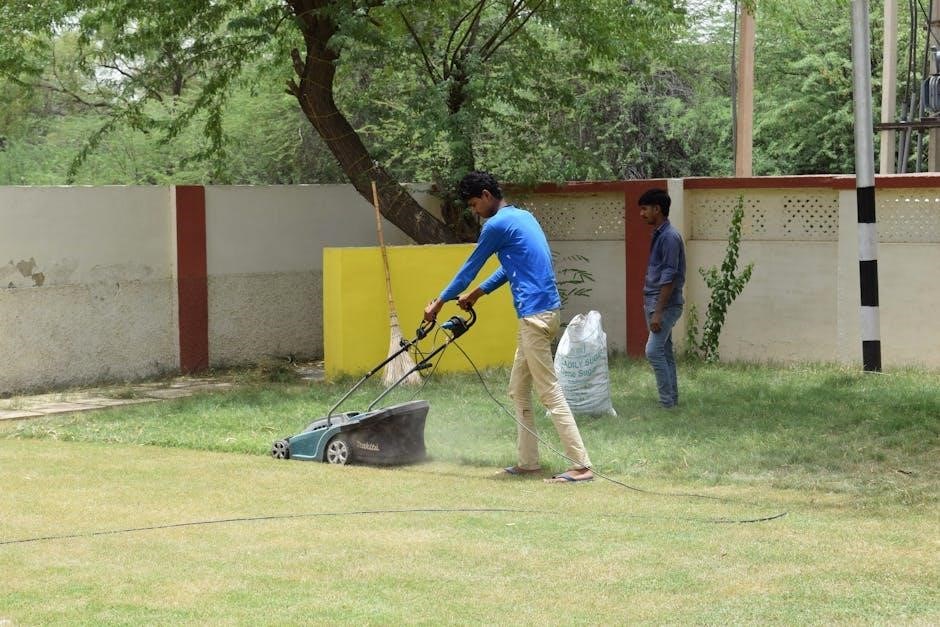
Troubleshooting Common Issues
Troubleshooting common lawn mower issues ensures optimal performance. Address problems like poor starts or uneven cuts promptly to prevent major repairs. Use a checklist to identify and solve issues effectively.
9.1 Difficulty Starting the Engine
If your lawn mower won’t start, check the fuel level and ensure the tank isn’t empty. Verify the choke is in the correct position and the air filter is clean. Loose connections or a faulty spark plug can also prevent ignition. Consult your maintenance checklist for steps to inspect and replace the spark plug or clean the carburetor; Ensure the blade is disengaged and the throttle is in the start position. Addressing these issues can resolve starting problems efficiently.
9.2 Uneven Cutting Performance
Uneven cutting can result from dull or damaged mower blades, causing patchy grass. Check and sharpen blades regularly for consistent cuts. Ensure the mower deck is clean and free of debris, as blockages can disrupt airflow. Verify that the mower is level; an uneven deck can lead to poor cutting. Adjust the deck height properly and maintain steady forward movement. Addressing these factors will help achieve a uniform lawn appearance and prevent further issues with cutting performance.
9.3 Excessive Vibration
Excessive vibration can indicate issues like unbalanced blades, loose bolts, or debris in the mower deck. Check for damage or wear on blades and balance them if necessary. Tighten all bolts and screws to ensure stability. Remove any debris accumulation in the deck or around the engine. Vibration can strain moving parts, so addressing it promptly prevents long-term damage and ensures smoother operation. Regular inspections can help identify these issues early.
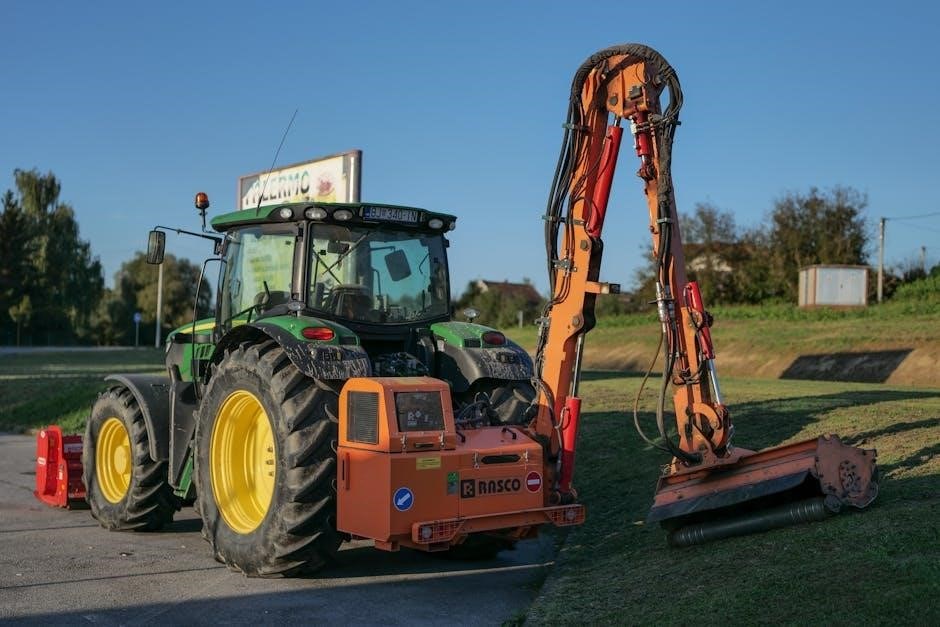
Downloading and Using the Maintenance Checklist PDF
Access the checklist from a trusted source, download it, and save it for easy reference. Print or save digitally to track maintenance progress effectively.
10.1 Steps to Download the PDF
Visit a trusted website or resource that offers the lawn mower maintenance checklist PDF.
Locate the download link or button, often labeled “Download Now” or similar.
Click on the link to initiate the download process.
Depending on the site, you may need to provide an email or create an account.
Once the download begins, monitor the progress in your browser or download manager.
Save the PDF to a convenient folder, such as “Tools” or ” Manuals,” for easy access.
Open the PDF to ensure it downloaded correctly and contains the necessary maintenance checklist.
Optionally, print the PDF or save it to your mobile device for reference during maintenance tasks.
10.2 Customizing the Checklist
To tailor the lawn mower maintenance checklist to your needs, start by identifying your mower type (gas, electric, or ride-on). Highlight or add tasks specific to your model, such as oil type or unique features. Adjust the schedule based on usage frequency—e.g., weekly for heavy use or monthly for light use. Include notes for personal reminders, like lubrication points or blade sharpening preferences. Use colors or bold text to prioritize critical tasks, ensuring the checklist aligns with your maintenance habits and preferences.
10.3 Digitally Signing the Checklist
Digital signatures enhance accountability and tracking. Open the PDF in a tool like DocuSign or Adobe Sign, then upload the checklist. Add a signature field where required, such as after completion of tasks. Sign digitally, save, and export the updated file. This step ensures traceability and verifies that maintenance was performed. It’s ideal for shared responsibility or organizational record-keeping, making it easy to track compliance and maintain accountability over time.
Regular lawn mower maintenance ensures optimal performance and longevity. By following the checklist, you can prevent issues and keep your mower in top condition season after season.
11.1 Summary of Key Maintenance Points
Regular maintenance is crucial for extending the lifespan of your lawn mower. Daily tasks include blade inspection and oil level checks. Weekly to monthly tasks involve sharpening blades, servicing the air filter, and lubricating moving parts. Annual maintenance includes oil changes, spark plug replacement, and belt inspection. Seasonal tips cover pre-season preparation, mid-season checks, and end-of-season storage. Following the manufacturer’s guidelines and using genuine parts ensures optimal performance and safety. A well-maintained mower guarantees efficient cutting and reduces repair needs.
11.2 Encouragement to Regularly Follow the Checklist
Consistently following the lawn mower maintenance checklist ensures your equipment runs efficiently and safely. Regular checks prevent breakdowns, improve cutting performance, and extend the mower’s lifespan. By making maintenance a habit, you’ll save time and money on repairs. Stay organized, track progress, and enjoy a well-manicured lawn with minimal effort. Committing to routine maintenance is a small investment for long-term benefits and peace of mind.
